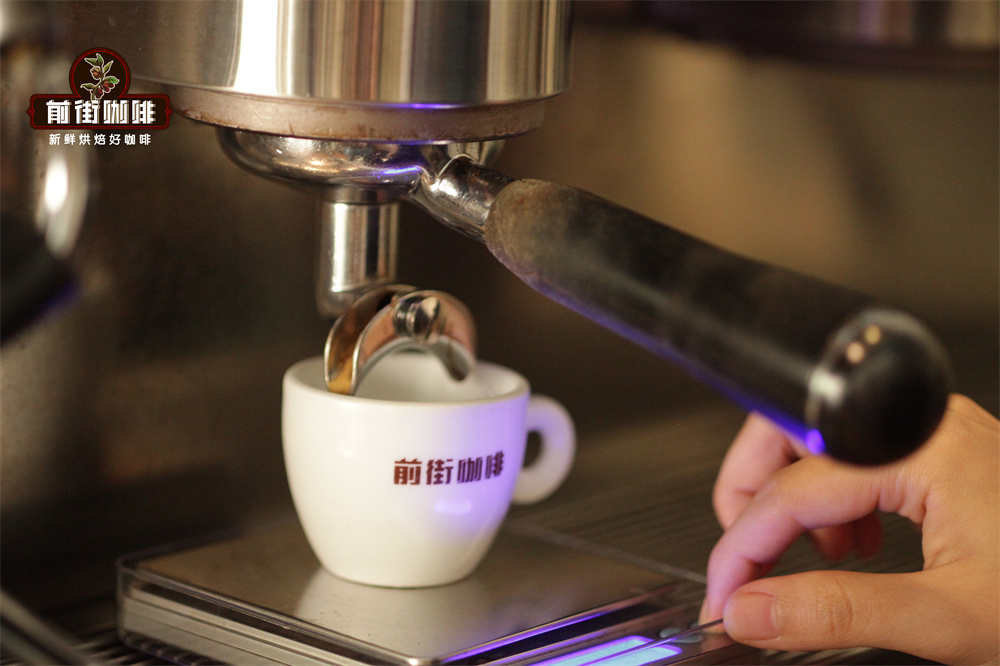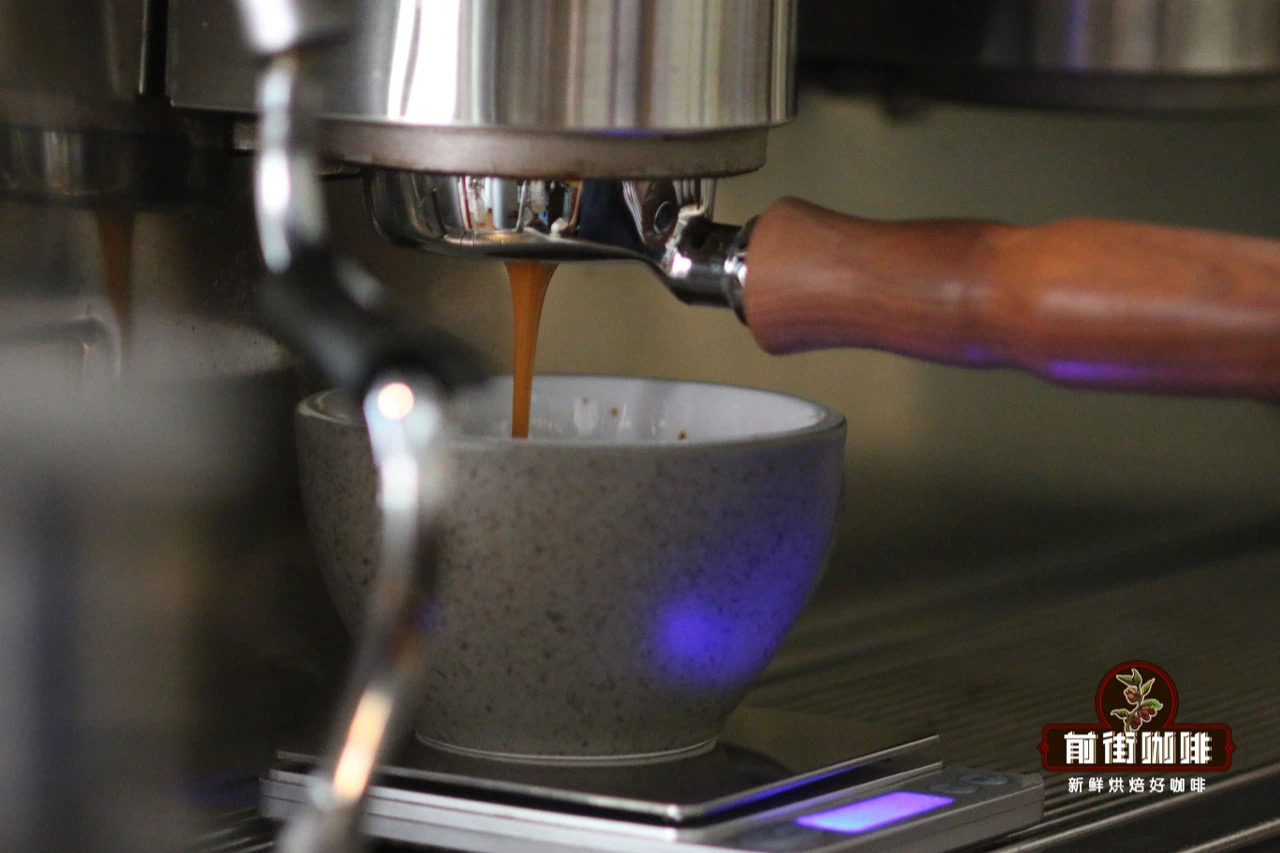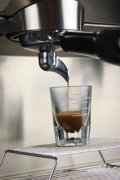Does Crema espresso oil affect the flavor and taste of a cup of coffee?

An in-depth understanding of the nature of crema will be of great help for baristas to make a good cup of concentrate. Today, the teacher of Chongqing Brista barista barista training course will give you a detailed analysis of crema to help you understand espresso and improve coffee making skills.
In the search for a cup of non-bitter, excellent flavor in the process of concentration, you may encounter a bad concentration every day, and coffee oil is one of the most important indicators. Whether it's drinking in a store or making it yourself at home, a cup of thick dark brown crema concentrate is what we are looking for.
Concentrated coffee bars covered with a layer of crema were first made in coffee bars and are now usually attributed to Achille Gaggia (the first Italian to design a coffee machine that provides real high pressure). In fact, if you have seen posters for coffee machines before World War II, such as the classic Victoria Arduino poster, you will see that there is almost no crema in the picture, just a glass of black liquid. Gaggia's "Crema Naturale" coffee machine uses a pull rod piston, which has changed all mainstream coffee drinkers' perception of concentration, and of course Gaggia himself should be the first to be hit.

Nowadays, when it comes to the definition of concentration, there must be a description of crema. Illy Cafe-- has become an industry standard setter in many ways, and their definition of condensation is as follows:
"Italian concentrate" is a multiphase drink that can be made with roasted and ground coffee powder and water. The concentrated surface is covered with a layer of foam made of tiny bubbles and has a special imprint like a stripe on a tiger's tail. At the bottom of the foam are particles with tiny emulsified oil droplets that dissolve sugars, acids, proteins, caffeine, bubbles and solids.
Emulsification: the role of a liquid in which tiny droplets are uniformly dispersed in another liquid that is immiscible. Emulsification is a liquid-liquid interface phenomenon, in which two insoluble liquids, such as oil and water, are divided into two layers in the container, with low-density oil in the upper layer and high-density water in the lower layer. If the appropriate surfactant is added under strong stirring, the oil is dispersed in the water to form an emulsion, which is called emulsification.)
(phase state: that is, the state of matter (or phase for short, also called physical state), refers to a set of states of a macroscopic physical system. A substance in a state has simple chemical composition and physical properties (such as density, crystal structure, refractive index, etc.). The most common states of matter are solid, liquid and gaseous, commonly known as "three states of matter".)
What is coffee fat? Why did crema disappear?
A series of complex chemical changes occur during coffee roasting to produce large amounts of carbon dioxide. Most of the carbon dioxide will be released naturally during the storage of ripe coffee beans, but more carbon dioxide will remain in the cell wall.
The pump pressure correlation of 9 bar is the insoluble oil in emulsified coffee. In fact, water pressure has another function, which is to make water supersaturated to carbon dioxide, increasing the solubility of water to carbon dioxide, thus dissolving more times more carbon dioxide than normal natural pressure. That's why hot water forms thousands of tiny bubbles when it passes through pressed powder.

The formation of the foam layer requires bubbles, as well as compounds or particles that like to surround these bubbles to make the structure of these bubbles stable and more elastic. The coating effect of these chemical components will involve surfactants. The formation of vesicles is mainly related to melanoidin (melanoidin). Melanoidin is a general term for a series of compounds formed during coffee roasting, and scientists know little about it.
Proteins and melanoidins can cover bubbles because they have ingredients that repel water-also known as hydrophobicity. So they approach gas rather than water, and because of their hydrophobicity, these substances are eventually adsorbed on the bubbles, forming a bubble layer.
There are other hydrophobic substances in coffee: fat / oil. The fat here is separated because "fat" is the solid form of oil (oil), which coexists in coffee.
The reasons for the disappearance of coffee oil are oil / oil and gravity. When the surfactant dissolves in water, gravity pulls down the coffee material stored in the foam layer, which pulls the substance that covers the surface of the bubble, causing the bubble to become fragile and inelastic, and eventually burst quickly.
The speed at which the foam layer disappears mainly depends on the speed at which gravity acts. A cup of properly extracted concentrated surface foam will last longer than a cup of underextracted concentrate. This is because the overall composition of the correctly extracted concentrate will be thicker, which can be confirmed by the tactile sensation concentrated in the mouth.
The color of coffee fat: what can it tell us?
The normal extraction of crema should be reddish brown, but what does it say when the concentrated crema is light, or very dark, almost scorched brown? Part of the answer has to do with concentration itself. Because crema is a bubble wrapped in carbon dioxide in concentration, if the foam layer looks dark, we can usually be sure that the concentrated liquid will also be very dark.

It is extremely difficult to distinguish the color of coffee liquid unless it is diluted with water or observed with a microscope. There is another factor to consider: the foam layer refracts light. So the foam layer will look lighter than the coffee liquid itself, and the smaller the bubble, the greater the effect. To sum up, even if the liquid is very dark and not as thick as espresso, the color of the foam layer above the liquid will appear very light.
When making espresso, espresso with an extraction time of 15 seconds usually has a very light layer of coffee oil, because it is not extracted enough and the water does not have enough time to extract the soluble substances in the coffee. Therefore, it will not have a consistency comparable to the concentration produced by the extraction time of 25 seconds. By the same principle, the concentration of too low water temperature extraction will also show a light color of crema, because it is difficult to extract soluble substances from coffee at low temperatures. This also proves on the contrary that the concentration of over-extraction presents a darker color than that of normal extraction, and there will be a dark focal outer ring on the surface of crema.

Important Notice :
前街咖啡 FrontStreet Coffee has moved to new addredd:
FrontStreet Coffee Address: 315,Donghua East Road,GuangZhou
Tel:020 38364473
- Prev

The judging method of Italian coffee oil is determined by the thickness.
In addition to the most important taste, oil is probably the most commonly used criterion for judging the quality of espresso. Its color, uniformity, thickness and fineness directly tell us the quality of a cup of espresso. The thickness of ESPRESSO grease is a very complicated problem, which is much more complicated than the color of grease. The thickness of grease is important for making a real cappuccino.
- Next

Where is the best place to grow coffee trees? where is the best place to grow coffee?
In botany, coffee trees belong to the evergreen trees of the subgenus Rubiaceae, and coffee beans, commonly known as coffee beans, are actually the seeds of the fruit of coffee trees, just because they are shaped like beans, so they are called coffee beans. Climate is the decisive factor for coffee cultivation. Coffee trees are only suitable for growing in the tropics or subtropics, so the zone between latitude 25 degrees south and north is the most suitable for growing coffee. And this...
Related
- Beginners will see the "Coffee pull flower" guide!
- What is the difference between ice blog purified milk and ordinary milk coffee?
- Why is the Philippines the largest producer of crops in Liberia?
- For coffee extraction, should the fine powder be retained?
- How does extracted espresso fill pressed powder? How much strength does it take to press the powder?
- How to make jasmine cold extract coffee? Is the jasmine + latte good?
- Will this little toy really make the coffee taste better? How does Lily Drip affect coffee extraction?
- Will the action of slapping the filter cup also affect coffee extraction?
- What's the difference between powder-to-water ratio and powder-to-liquid ratio?
- What is the Ethiopian local species? What does it have to do with Heirloom native species?

